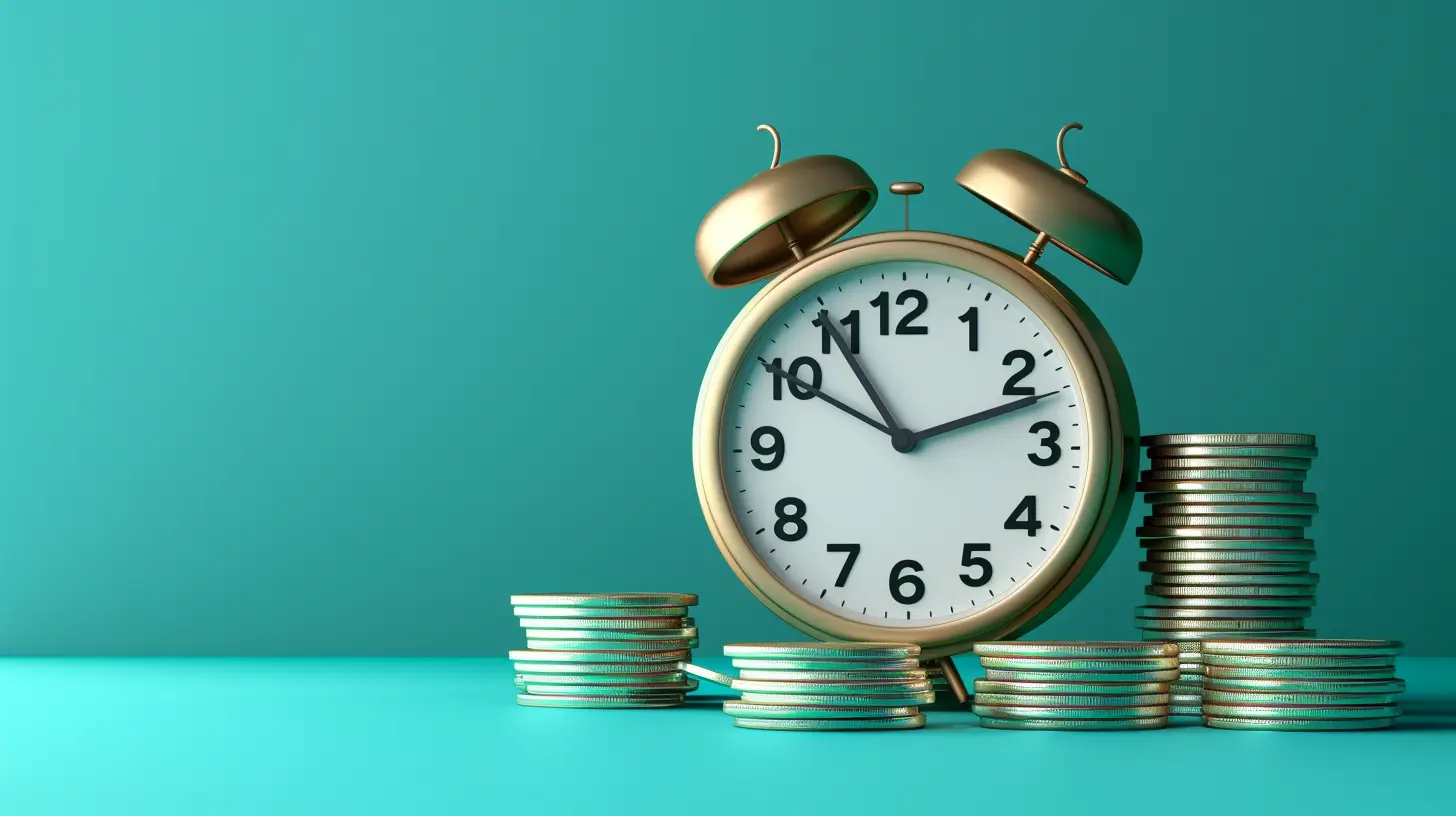Evaluating When It's Time to Raise Your Freelance Rates
15 July 2025
Freelancing is like trying to balance on a tightrope—you’re constantly navigating the fine line between undervaluing your worth and overpricing your services. Whether you’re just getting started or you’ve been in the game for years, one of the trickiest decisions you’ll face is figuring out when (and how) to raise your rates. Let’s be real—talking about money can feel weird. But if you’re not charging what you’re worth, you risk burnout or resentment, and nobody wins there.
So, how do you know it’s time to up your rates? Let’s break this down step by step so you can confidently decide when to make your move and ensure you're getting paid what you deserve, without alienating your clients. 
Why Raising Your Rates Isn’t Selfish
First up, let’s get one thing straight: demanding more for your work doesn’t make you greedy. It makes you smart. Think about it—you wouldn’t expect a restaurant to offer the same menu prices from 2015 today, right? Inflation is a thing. Your skills improve. Your expenses increase. So why shouldn’t your rates reflect your growth and the value you bring to the table?Raising your freelance rates isn’t just about the money—it’s about aligning your pricing with your expertise. It’s a signal to your clients and the world that you respect your work and they should, too. 
Signs It’s Time to Raise Your Rates
Let’s cut to the chase. How do you really know it’s time to bump up your pricing? Here are some tell-tale signs.1. You’re Fully Booked (All the Time)
If your calendar looks like a Tetris nightmare with barely a moment to breathe, it’s a glaring signal to raise your rates. Why? Supply and demand, my friend. When your availability is scarce, it means clients see value in your work. By increasing your rates, you can manage your workload without feeling overwhelmed while still earning the same (or more).2. Your Skillset Has Leveled Up
Think back to when you started freelancing. Were you offering the exact same quality of work as you are now? Probably not. Over time, you've likely taken courses, gained certifications, or refined your processes. If you’re bringing more to the table than you were six months or a year ago, it's time to reflect that growth in your pricing.3. You’re Attracting Higher-Caliber Clients
Ever had a big-name client knock on your (virtual) door and still charge them your beginner rates? Ugh. That’s a missed opportunity. If you’ve started to work with more established businesses or have a portfolio that screams “professional,” you can 100% justify increasing your fees.4. Your Costs Are Increasing
Let’s face it: life isn’t getting cheaper. Whether it’s software, tools, or just the general cost of living, you’ve got bills to pay. Your rates need to keep up with your expenses, or you’ll end up working harder just to stay afloat.5. Clients Rarely Negotiating Your Rates
If clients happily pay your invoices without batting an eye, your rates may not be as competitive as you think. While it’s great to have clients who value your work, it’s also a sign that you might be undercharging. A small rate increase likely won’t scare off these types of clients—they already trust in your value.
How to Raise Your Freelance Rates Without Burning Bridges
Okay, so you’ve decided it’s time. But how do you break the news to your clients without feeling like a villain? Here’s a game plan.1. Give Advance Notice
No one likes surprises—especially when it comes to pricing. If you’re planning to raise your rates, let your clients know ahead of time. A simple email 30–60 days before the change takes effect can make a world of difference.2. Justify the Increase
You don’t have to go into a full TED Talk about why you're increasing your rates, but a little context helps. Highlight the value you bring, any improvements in your skillset, or even rising costs. For example:"Over the past year, I’ve invested in additional training and tools to deliver even better results for my clients. To reflect these improvements and the rising costs of running my business, I’ll be adjusting my rates starting [date]."
3. Keep It Professional
If you’re nervous about pushback, remember to keep the conversation professional and confident. Avoid over-apologizing or downplaying the change. If you don’t believe in your value, why should your client?4. Consider Grandfathered Rates
For long-term, loyal clients, you might offer a “grandfathered” rate—keeping them on their current pricing for a set period. This small gesture can go a long way in preserving good relationships while still enabling you to boost your income elsewhere.
Common Fears (And How to Silence Them)
Let’s be real: raising your rates can feel terrifying. What if clients drop you? What if no one hires you again? These fears are normal, but they’re usually just that—fears. Let’s tackle a few of these doubts head-on.“What if my clients leave?”
Here’s the hard truth: some might. And guess what? That’s okay. If a client doesn’t see the value in paying you what you’re worth, it’s probably time to part ways. The clients who do stick around will value you even more, and new clients will respect your rates from the start.“What if new clients think I’m too expensive?”
Remember, freelancing isn’t about appealing to everyone. It’s about finding the right clients—those who understand the value you bring. If your pricing weeds out clients who only want the cheapest option, that’s a good thing.“What if I don’t deserve it?”
Whoa, let’s pause right there. If you’re delivering quality work, you absolutely deserve to be compensated fairly. Impostor syndrome is common among freelancers, but don’t let it dictate your pricing.How Often Should You Raise Your Rates?
There’s no hard-and-fast rule here, but a good ballpark is to evaluate your rates every 6–12 months. Industry standards and personal growth move quickly, so staying stagnant for too long could mean leaving money on the table.To keep it consistent, set a recurring calendar reminder to review your pricing. That way, you’re making adjustments proactively rather than scrambling when finances get tight.
Tools to Help You Determine the Perfect Rate
Need a little help crunching the numbers? Try these tools to calculate your “sweet spot” rate:- Freelance Rate Calculators: Websites like NerdWallet or Freelancer’s Union offer pricing calculators to help you figure out your ideal hourly or project rate.
- Market Research: Check out job boards and forums in your niche to see what other freelancers with similar experience are charging.
- Expense Trackers: Use apps like QuickBooks or FreshBooks to calculate your business expenses and determine how much you need to earn to meet your goals.
The Bottom Line
Raising your freelance rates is more than just a financial decision—it’s a step toward valuing yourself and your work. Yes, it can feel scary. Yes, it might take a little trial and error. But at the end of the day, charging what you’re worth ensures you can continue doing the work you love without sacrificing your well-being.So go ahead—take that leap. Your bank account (and your sanity) will thank you later.
all images in this post were generated using AI tools
Category:
FreelancingAuthor:

Rosa Gilbert
Discussion
rate this article
1 comments
Rowan Ross
Great insights! Knowing when to raise rates can be tricky, but it's essential growth!
July 21, 2025 at 4:26 AM

Rosa Gilbert
Thank you! You're right—timing is key for growth, and understanding the market can make all the difference.


